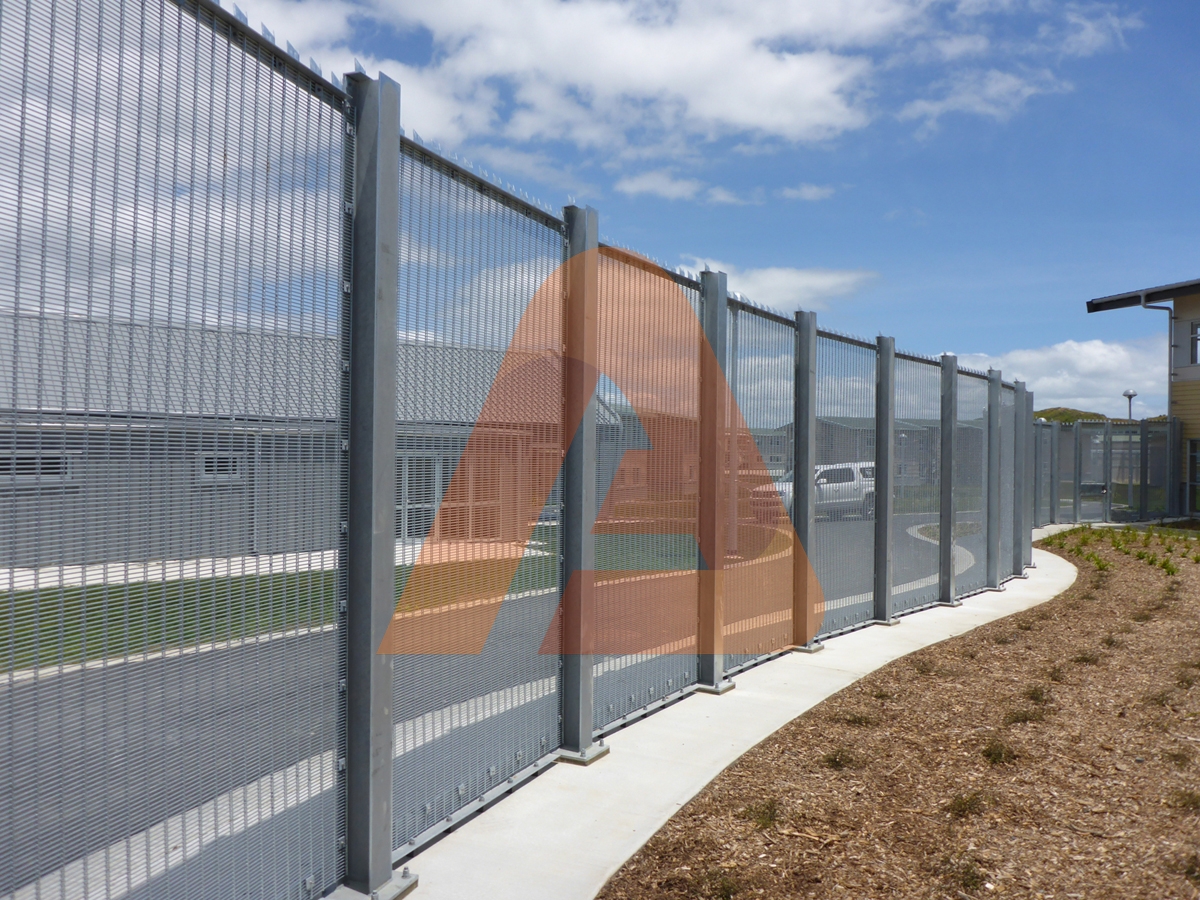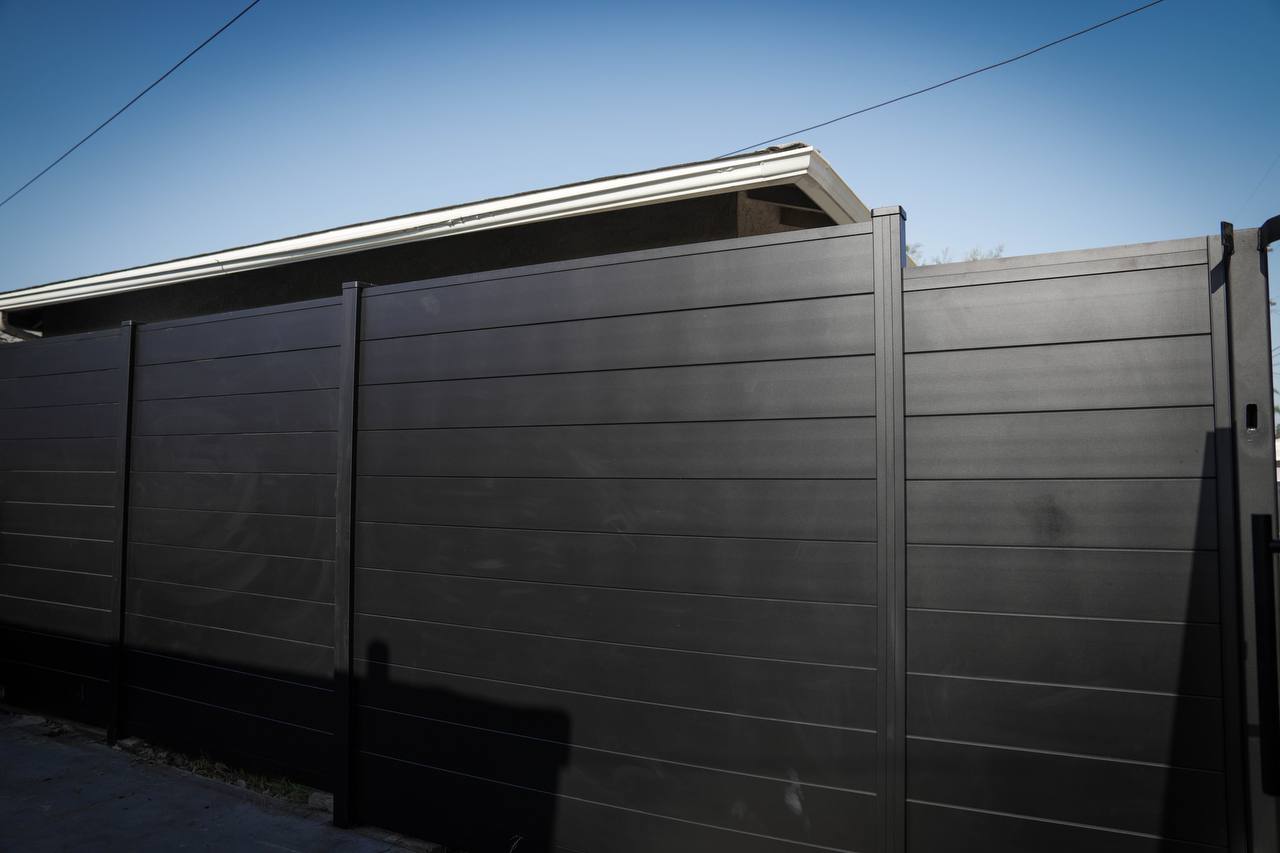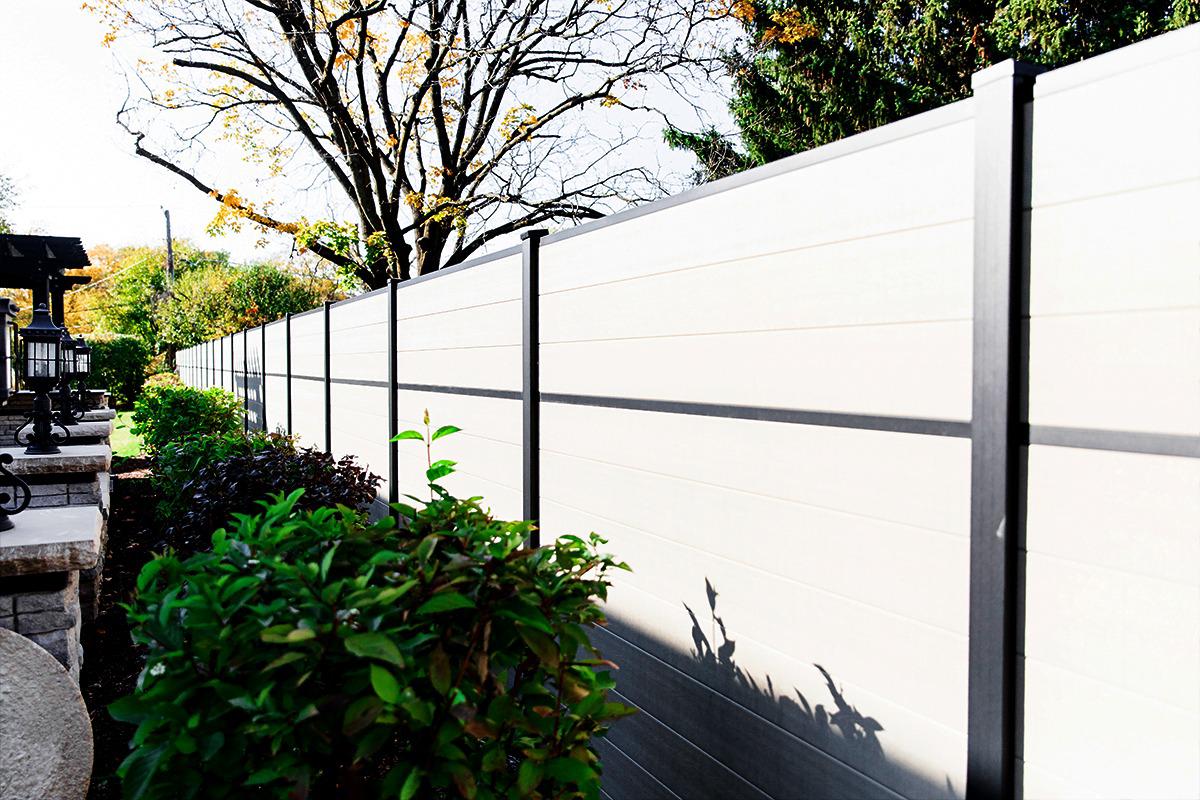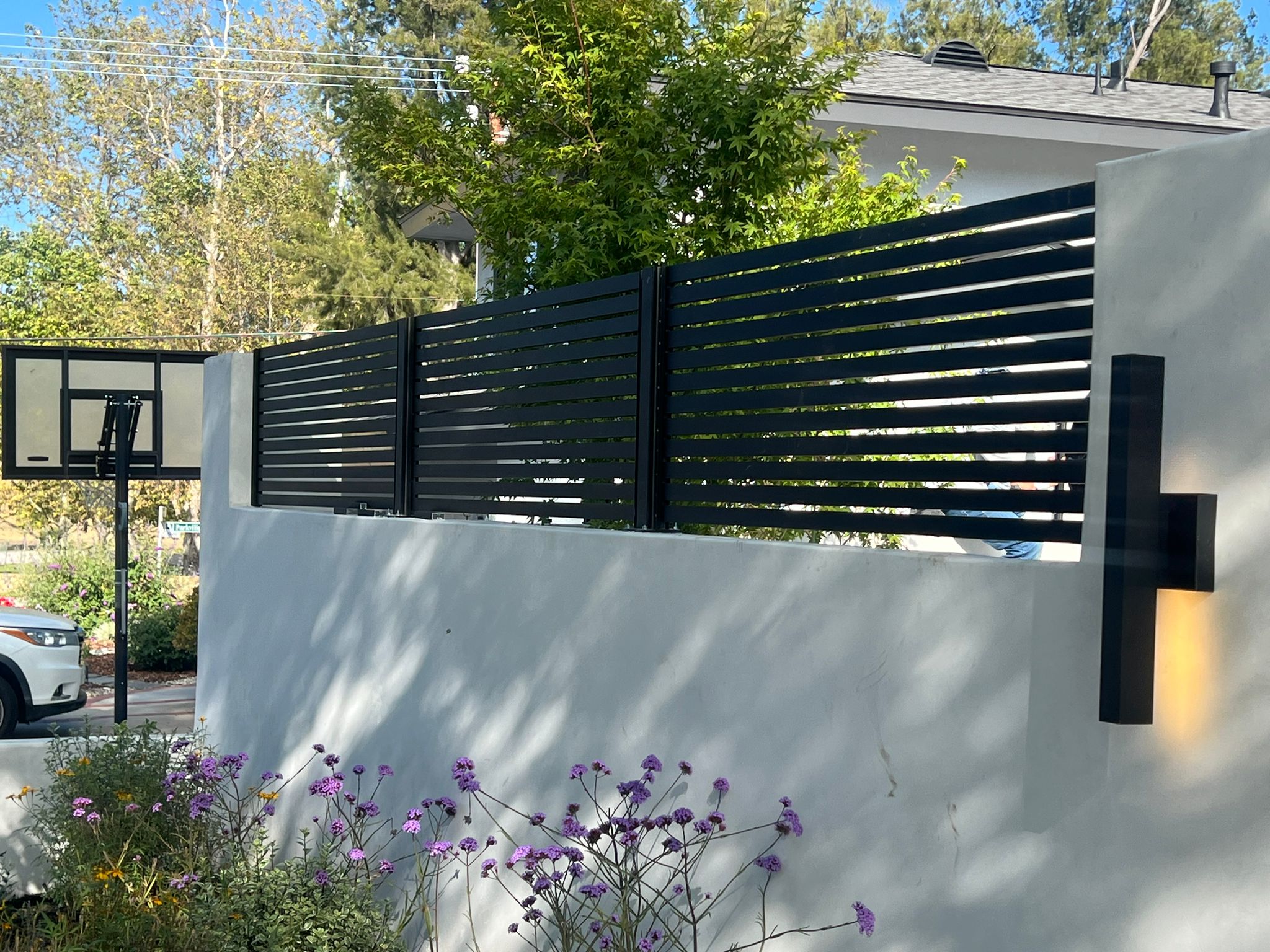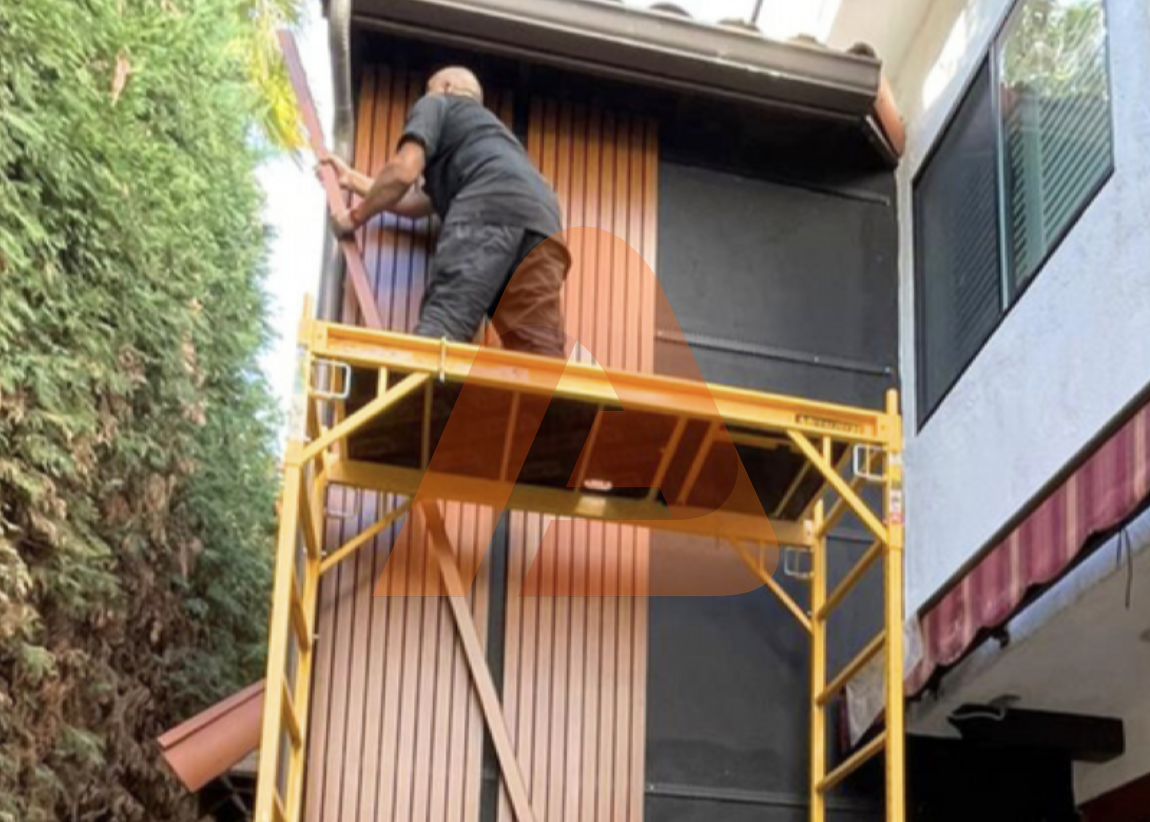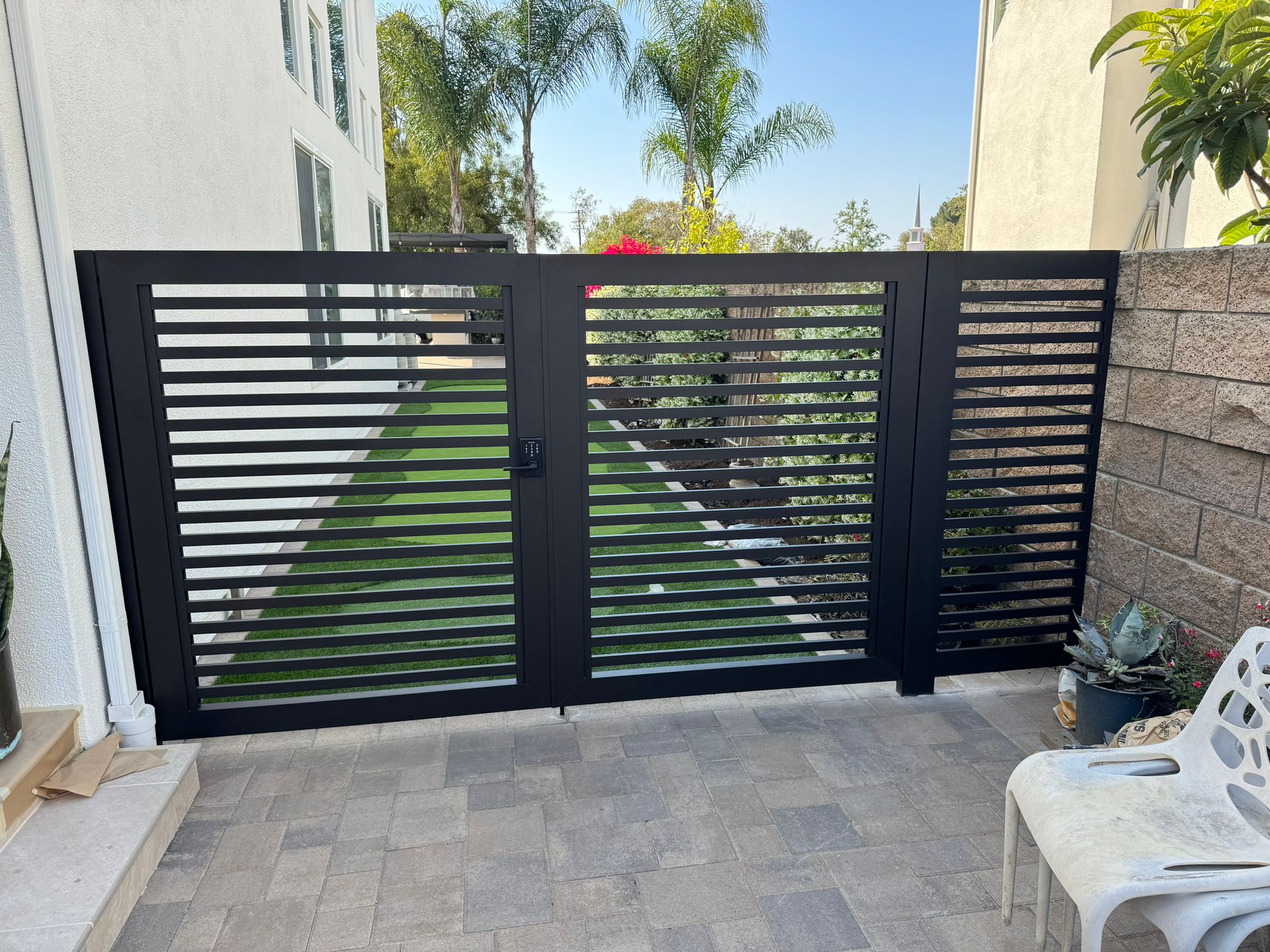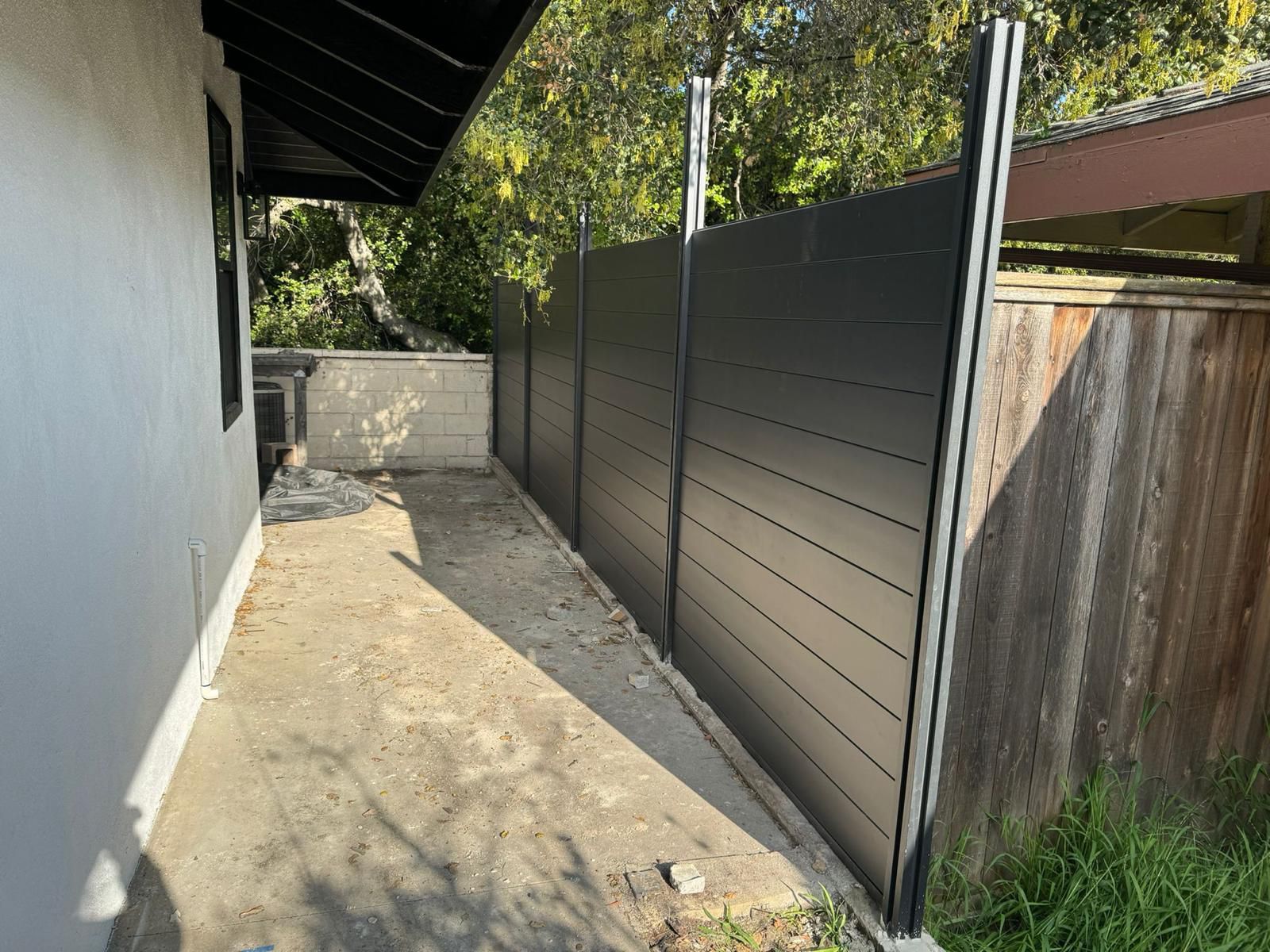
Aluminum fencing Universal Solution
- By Admin
- Posted on
When it comes to choosing a fence that balances style, security, and long-term durability, few materials can compete with aluminum. Whether you’re enclosing a backyard, protecting a pool, or securing a commercial property, aluminum fencing has become one of the most universal and reliable solutions available today.
This modern fencing material offers the sleek look of wrought iron without the rust, the strength of steel without the weight, and the elegance of wood without the maintenance. From residential homes to business complexes, aluminum fencing adapts seamlessly to nearly any project — combining beauty, practicality, and performance.
What Is Aluminum Fencing?
Aluminum fencing is made from strong yet lightweight extruded aluminum alloy — most commonly 6063-T6 or similar grades used in architectural applications. It’s engineered for strength, coated with a protective powder finish, and designed to endure extreme climates without corrosion or fading.
Unlike iron or steel, aluminum doesn’t rust. Unlike wood, it doesn’t warp, crack, or rot. These properties make it an ideal choice for property owners looking for a low-maintenance and long-lasting perimeter solution.
Why Aluminum Fencing Is Considered Universal
Aluminum fencing’s biggest advantage lies in its versatility. It can be used for virtually any type of property or terrain — from residential gardens and gated communities to public parks and industrial sites. Because it’s lightweight and customizable, it fits spaces of all shapes and sizes.
It also adapts easily to sloped or uneven ground thanks to its “rackable” design — panels that adjust to changes in grade without leaving awkward gaps. Whether your land is flat, hilly, or curved, aluminum fencing creates a consistent, professional look without complex installation.
Key Advantages of Aluminum Fencing
1. Durability and Weather Resistance
Aluminum fencing is built to last. It’s naturally resistant to rust, corrosion, and UV damage — even in the most demanding environments. Whether you’re dealing with salty coastal air, heavy rain, or blazing sun, aluminum fences hold their structure and color for decades.
The secret lies in the powder-coated finish, which creates a durable barrier against the elements. Unlike paint, powder coating won’t peel or chip easily, ensuring your fence maintains its new-look appearance year after year.
2. Low Maintenance and Cost Efficiency
One of the biggest reasons homeowners and businesses are switching to aluminum fencing is its nearly maintenance-free nature. A quick rinse with a hose or mild soap is all it takes to keep it clean. There’s no staining, sealing, or repainting required — ever.
This low upkeep translates into major savings over time. While the initial investment may be slightly higher than wood, the absence of repair and maintenance costs makes aluminum a far more economical choice in the long run.
3. Lightweight Yet Strong
Despite being lightweight, aluminum fencing offers impressive structural strength. Its hollow profiles make it easier to install and transport, but don’t underestimate its resilience — properly installed aluminum fencing can withstand high winds and pressure without bending or breaking.
This combination of strength and low weight also makes it ideal for driveway gates, pool enclosures, and commercial perimeters, where both performance and aesthetics matter.
4. Stylish and Customizable
Aluminum fences come in an endless variety of styles, heights, and colors. You can choose from traditional picket looks that mimic wrought iron, or go for sleek horizontal slats for a contemporary feel. Matte black, bronze, and white finishes remain the most popular, but custom powder-coating allows for nearly any tone to complement your architecture.
From decorative finials and spear tops to minimalist flat rails, aluminum fencing gives designers and homeowners the freedom to match any landscape or building style.
5. Eco-Friendly and Sustainable
Aluminum is one of the most recyclable materials on the planet. Most aluminum fences are made with a percentage of recycled content, and they can be fully recycled again at the end of their life. In addition, they don’t require chemical treatments, stains, or sealants — reducing environmental impact and keeping harmful compounds out of the soil.
Where Aluminum Fencing Works Best
Aluminum’s adaptability makes it suitable for a wide range of environments and purposes — from cozy residential backyards to high-traffic industrial areas. It’s often described as a “universal fencing solution” because of how effectively it serves multiple applications through one consistent system.
Residential Properties: Perfect for defining property lines, adding curb appeal, and keeping kids or pets safely inside without blocking views.
Pool Enclosures: Aluminum fencing meets safety regulations while maintaining visibility, ventilation, and an open feel around swimming pools.
Commercial and Industrial Sites: Provides clean, professional perimeter security without rust or repainting — ideal for schools, warehouses, and retail centers.
Driveways and Entrances: Lightweight yet strong gates and fencing systems ensure smooth operation and elegant appearance.
Public Parks and Recreational Spaces: Offers long-term durability and low upkeep for municipalities and community projects.
Cost and Long-Term Value
At first glance, aluminum fencing might seem pricier than wood or chain link, but its total lifetime cost is actually lower. The upfront cost typically ranges from $30 to $60 per linear foot installed, depending on height, finish, and decorative features.
Because it requires no paint, no stain, and virtually no repairs, its long-term value quickly surpasses cheaper materials. A well-built aluminum fence can easily last 30–50 years — meaning you’ll only pay once for decades of security and style.
Moreover, an aluminum fence enhances property value and curb appeal. Its clean design and durability are appealing to potential buyers, making it a smart investment for resale as well as everyday enjoyment.
Design Flexibility and Modern Trends
Today’s aluminum fencing isn’t just about function — it’s a major part of exterior design trends. Many homeowners and architects are opting for modern horizontal aluminum slats for a sleek, contemporary vibe that complements aluminum gates and architectural cladding.
In upscale communities, black powder-coated aluminum fencing has become a standard feature for luxury homes, pool decks, and hillside properties. Commercial developers prefer it for its uniformity and low upkeep, especially in coastal regions where traditional iron would corrode within a few years.
The ability to mix aluminum with glass panels, woodgrain finishes, or composite inserts has also opened new creative possibilities, allowing every project to achieve a unique, signature look.
Potential Drawbacks and How to Overcome Them
While aluminum fencing has countless benefits, it’s fair to note a few considerations:
Less Privacy: Most aluminum fences are open-picket designs, so they don’t provide full privacy. However, adding decorative panels or mixed-material inserts can solve this issue.
Higher Initial Cost: The upfront price may exceed that of vinyl or wood, but the lack of maintenance costs quickly offsets this over time.
Quality Variation: Not all aluminum fences are equal. Opting for architectural-grade aluminum and a certified powder-coating ensures better performance and color longevity.
By choosing reputable manufacturers and professional installers, these potential drawbacks become virtually negligible.
Choosing the Right Aluminum Fence
When planning your aluminum fence, consider the following key factors to ensure a perfect fit:
Purpose: Define whether your main goal is security, aesthetics, pet containment, or pool safety.
Style: Pick from traditional spear-top panels, modern flat-top designs, or horizontal slats.
Height & Spacing: Local codes often regulate pool and property fence heights.
Finish: Choose powder-coated finishes for extra UV and corrosion protection.
Installation Method: Decide between DIY panels or professional installation for warranty protection and code compliance.
By clarifying these elements early, you’ll get a fencing system that not only meets functional needs but also enhances the visual identity of your property.
The Future of Aluminum Fencing
The global fencing industry has seen a steady shift toward aluminum over the last decade, and this trend shows no signs of slowing. Rising material innovation, growing sustainability awareness, and an emphasis on low-maintenance products have made aluminum the preferred choice for modern construction.
Homeowners’ associations, architects, and contractors alike now favor aluminum for its uniformity and long-term reliability. As design technology evolves, we’re also seeing powder-coated finishes that mimic woodgrain textures and integrated LED-ready profiles for luxury projects — proving that aluminum fencing continues to evolve as both a functional and design-driven solution.
Conclusion
Aluminum fencing has earned its reputation as a universal solution for all types of properties. It combines strength, elegance, and efficiency in one package — offering a long-lasting, eco-friendly, and maintenance-free alternative to traditional materials.
Whether you’re securing a home, framing a pool, or defining the boundaries of a commercial site, aluminum fencing delivers a perfect balance of beauty and performance. Durable, adaptable, and built for the future — it’s not just a fence; it’s an investment in lasting quality.
FAQs
How long does aluminum fencing last?
Aluminum fencing can last anywhere from 30 to 50 years or more, depending on the grade and powder-coating quality. It’s one of the most durable fencing materials available today.
Is aluminum fencing better than iron or steel?
Yes — aluminum offers similar strength and visual appeal but won’t rust or corrode. It’s also lighter and easier to maintain than iron or steel.
Does aluminum fencing provide privacy?
Traditional aluminum picket designs are open, allowing visibility. However, privacy options exist with horizontal slats, decorative panels, or composite inserts.
Can aluminum fencing be installed on uneven ground?
Absolutely. Rackable panels allow aluminum fences to follow the contour of sloped or uneven terrain without leaving gaps beneath the panels.
Is aluminum fencing safe for pools?
Yes. Aluminum fences meet most pool safety codes because they’re strong, corrosion-resistant, and maintain visibility for supervision.
How much does aluminum fencing cost compared to other materials?
While aluminum fencing typically costs more upfront than wood or vinyl, its low maintenance and long lifespan make it more cost-effective in the long term.
Can aluminum fences be repainted or refinished?
They don’t need repainting, but if you want to change colors, you can use specialized primers and outdoor metal paints over the powder-coated surface.
How should I clean and maintain my aluminum fence?
Simply wash it with water or mild detergent once or twice a year. Avoid abrasive cleaners to preserve the powder-coated finish.
Is aluminum fencing environmentally friendly?
It is. Aluminum is 100% recyclable, and many fences use recycled material. Its long lifespan and lack of chemical treatments make it eco-friendly.


